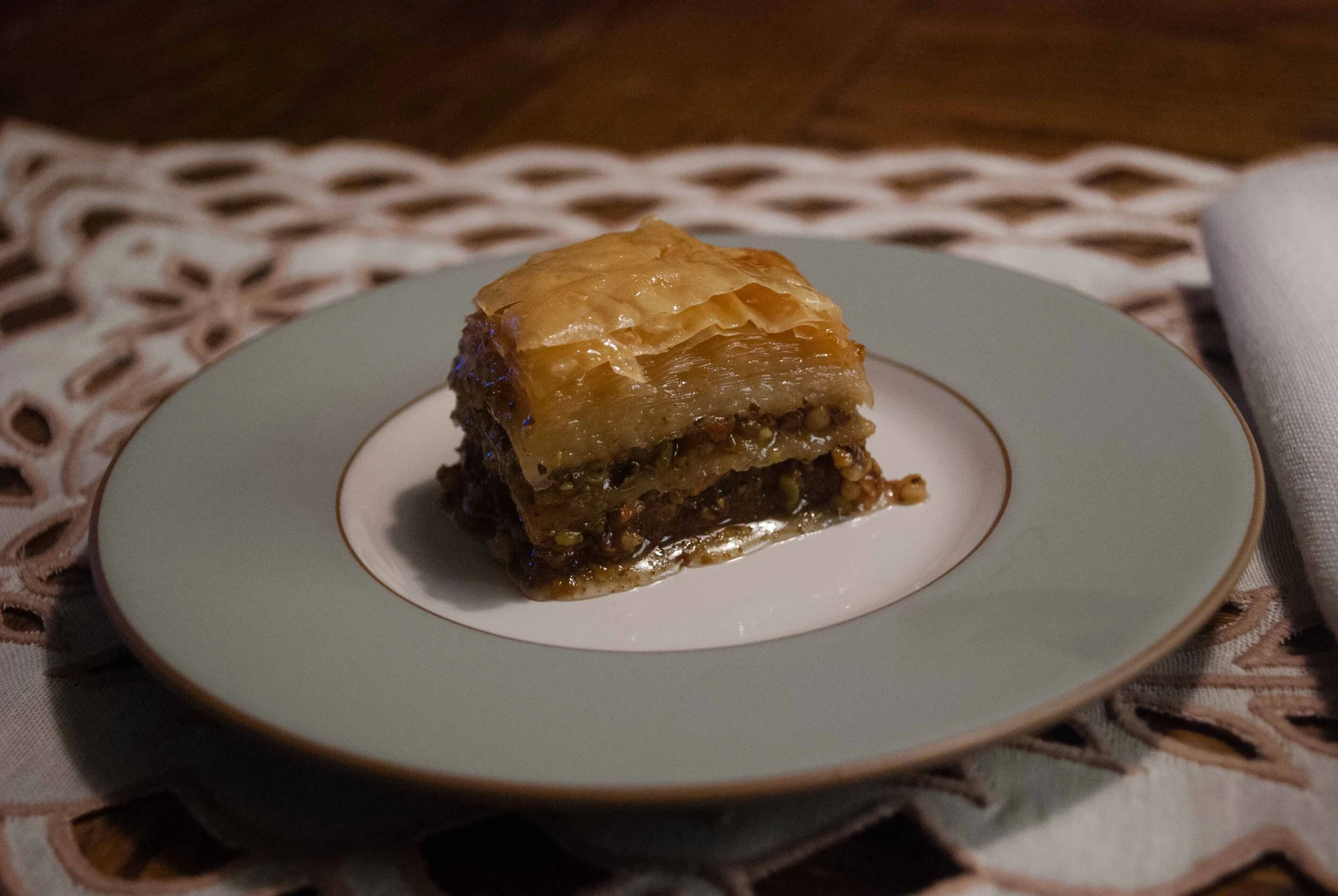Turkish Baklava
Baklava is one of those desserts that satiates perfectly. For such a tiny little serving it has to hit all the right notes, and it does. Crispy, chewy, crunchy, sweet, just a touch salty, and decadent. Served with some simple Turkish coffee, this is one of my favorite desserts.
I’ve found a few articles talking about the differences between Greek and Turkish baklava, the conclusions I drew were that Greek baklava generally uses walnuts and a honey syrup, and Turkish uses pistachios and a sugar syrup with either lemon or rose water. I will have it either way any day. In fact to simplify this recipe, I suggest if you don’t want to shell 3 full cups of pistachios you can throw in a mix of walnuts and pistachios for a delicious blend.
I have never made, and probably will never make, my own phyllo dough. It is so quick and easy to buy frozen from the supermarket, and tastes great! With a little patience, baklava is surprisingly easy to make and serves a good crowd. Given that we are currently mid-Pandemic, I froze half the batch I made and will pull it out for future dessert emergencies, but once we are back to dinner parties and seeing other people I will definitely make this again to share.
Turkish Baklava
Adapted from House of Nash Eats and NYT
3 cups sugar
1 2/3 cups water
Juice of ½ - 1 lemon
1 pound Phyllo, defrosted overnight in the refrigerator
3 cups shelled pistachios, finely chopped or a combination of pistachios and walnuts
¾ lb butter, clarified
1. To make the syrup: In a medium pot, combine the sugar and water over medium-high heat. Bring to a boil, then reduce the heat to medium-low and simmer for 20-25 minutes, until slightly thickened and golden in color. Stir in lemon juice, then cool completely in the fridge until ready to use.
2. To clarify butter: Melt ¾ pound of butter in a saucepan over low heat. The melted butter will separate into 3 layers: foamy froth on top, clear yellow liquid in the middle, and white solids at the bottom. When the butter is completely melted and the foam has formed, remove the pan from the heat. Scoop the foam off the top with a spoon and discard. Keep the yellow middle layer by pouring it into a new container from the saucepan without removing the milk solids. Set aside.
3. Heat oven to 350° F and brush a 9x13-inch baking dish with clarified butter.
4. To assemble the baklava: Trim the phyllo dough to fit the baking dish, if needed, and cover with a damp kitchen towel to keep it from drying out while assembling the baklava. Carefully separate 1 sheet of phyllo from the stack and lay it on the bottom of the baking dish. Brush the phyllo sheet lightly with clarified butter.
5. Continue to layer 8-9 more phyllo sheets on top, brushing each sheet with butter until 10 sheets of phyllo have been stacked in the bottom of the baking dish. Sprinkle 1/2 of the chopped nuts over the phyllo base in an even layer.
6. Repeat the process to create another 8-10 sheet layer of phyllo and butter, followed by the remaining 1/2 of the nuts, and another top layer made up of the remaining phyllo sheets and butter. Slice into 36 pieces with a sharp knife, making sure to always cut through all layers.
7. Bake for 60 minutes, until the top is golden brown, and the bottom phyllo layers are baked through. Use a knife to lift up a corner of one of the rectangles to see if the bottom layers are done. Check the baklava after 40 minutes and cover with a piece of foil over the top if the baklava is getting too browned.
8. When the baklava is done, remove from oven and slowly pour the cold syrup over the hot baklava. The syrup will likely bubble up and some may even overflow. If you prefer yours a little drier or less sweet you can hold back a little of the syrup.
9. Let the baklava cool completely before serving at room temperature.

